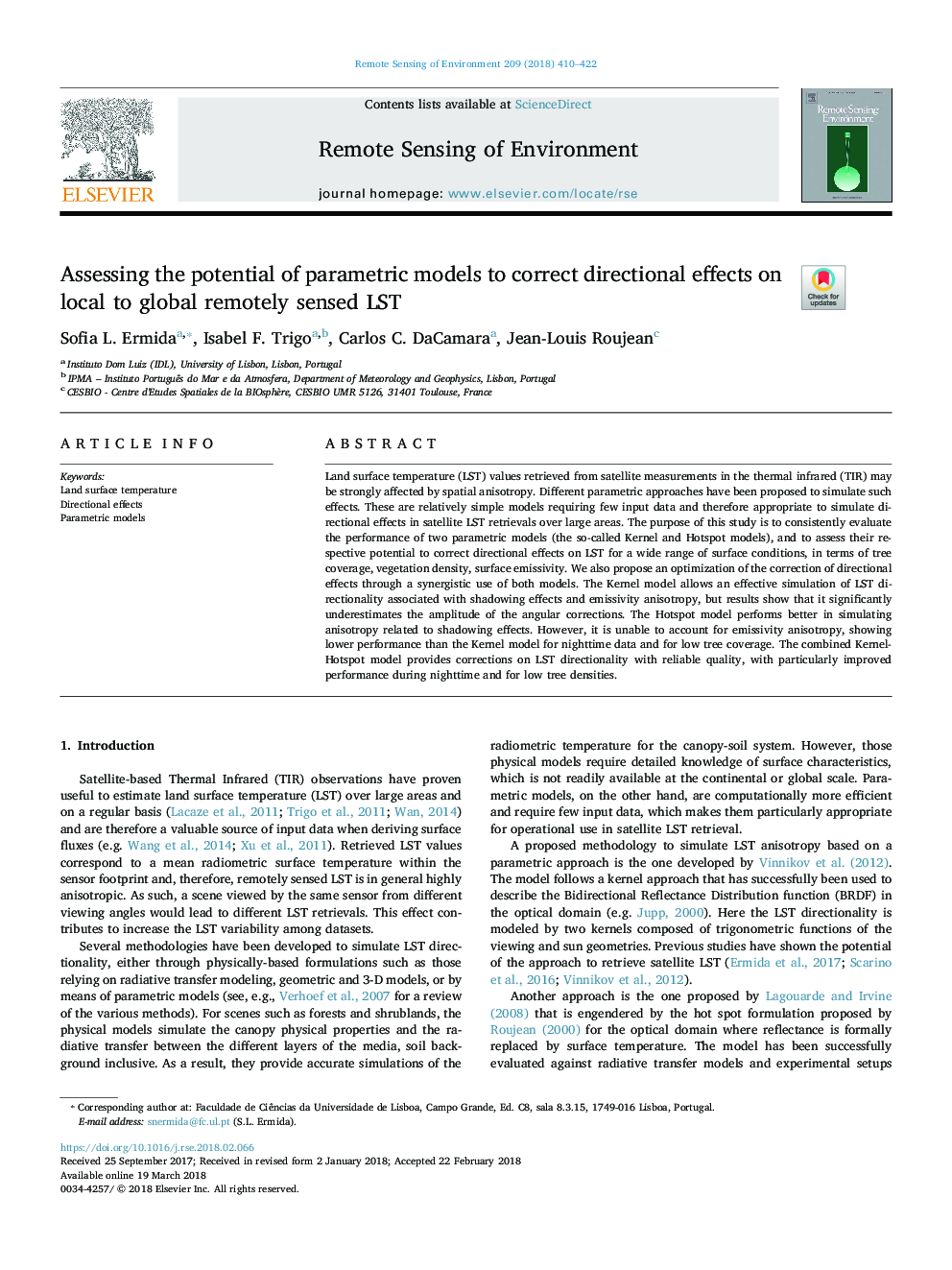| Article ID | Journal | Published Year | Pages | File Type |
|---|---|---|---|---|
| 8866648 | Remote Sensing of Environment | 2018 | 13 Pages |
Abstract
Land surface temperature (LST) values retrieved from satellite measurements in the thermal infrared (TIR) may be strongly affected by spatial anisotropy. Different parametric approaches have been proposed to simulate such effects. These are relatively simple models requiring few input data and therefore appropriate to simulate directional effects in satellite LST retrievals over large areas. The purpose of this study is to consistently evaluate the performance of two parametric models (the so-called Kernel and Hotspot models), and to assess their respective potential to correct directional effects on LST for a wide range of surface conditions, in terms of tree coverage, vegetation density, surface emissivity. We also propose an optimization of the correction of directional effects through a synergistic use of both models. The Kernel model allows an effective simulation of LST directionality associated with shadowing effects and emissivity anisotropy, but results show that it significantly underestimates the amplitude of the angular corrections. The Hotspot model performs better in simulating anisotropy related to shadowing effects. However, it is unable to account for emissivity anisotropy, showing lower performance than the Kernel model for nighttime data and for low tree coverage. The combined Kernel-Hotspot model provides corrections on LST directionality with reliable quality, with particularly improved performance during nighttime and for low tree densities.
Related Topics
Physical Sciences and Engineering
Earth and Planetary Sciences
Computers in Earth Sciences
Authors
Sofia L. Ermida, Isabel F. Trigo, Carlos C. DaCamara, Jean-Louis Roujean,
